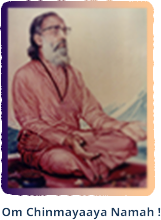As per Indian tradition human life is divided into four segments each of about 25 year’s duration - Brahmacharya, Grihasta, Vanaprastha and Sannyaasa. After discharging the responsibilities of a Grihasta (householder), one is advised to adopt a Vanaprastha (retiree) lifestyle for spiritual attainment. Traditionally, Vanaprasthis were expected to retire to a forest ashram and live an austere life coupled with intensive spiritual practices. Unfortunately, with the passage of time and changed circumstances, the grihasta life segment has been prolonged reaching to the end of an individual’s life.
In accordance with the four stages taught in the Vedas, when a householder enters his later years or nears retirement, it is most beneficial for him or her to withdraw from the stresses and pressures of a materialistic lifestyle, to spend more time seeking and finding inner peace. In the word ‘vanaprastha’, ‘stha’ means ‘staying', and in the vanam (forest), implies staying away from home. However, in the Kena Upanishad, the word ‘vanam’ has a different meaning and refers to Paramatma - the Supreme Lord. So, one meaning is ‘forest,’ but the other meaning is ‘Paramatma Brahma’. Thus, the meaning of vanaprastha is ‘one who intends to abide in Brahman alone’.
The aim of CCVS is to assist and train householders and near-retirees to make a smoother and easier transition from life in grihasta ashram to life in vanaprastha ashram, and finally to sannyaasa. It strives to improve the quality and style of life for senior citizens through lifelong learning and selfless service. The learning aspect includes training in prevention and cure of old-age diseases through a holistic approach, tackling financial, social, psychological problems of the aging population and above all, understanding the aims of the third and fourth stages of human life and the means of achieving them.
